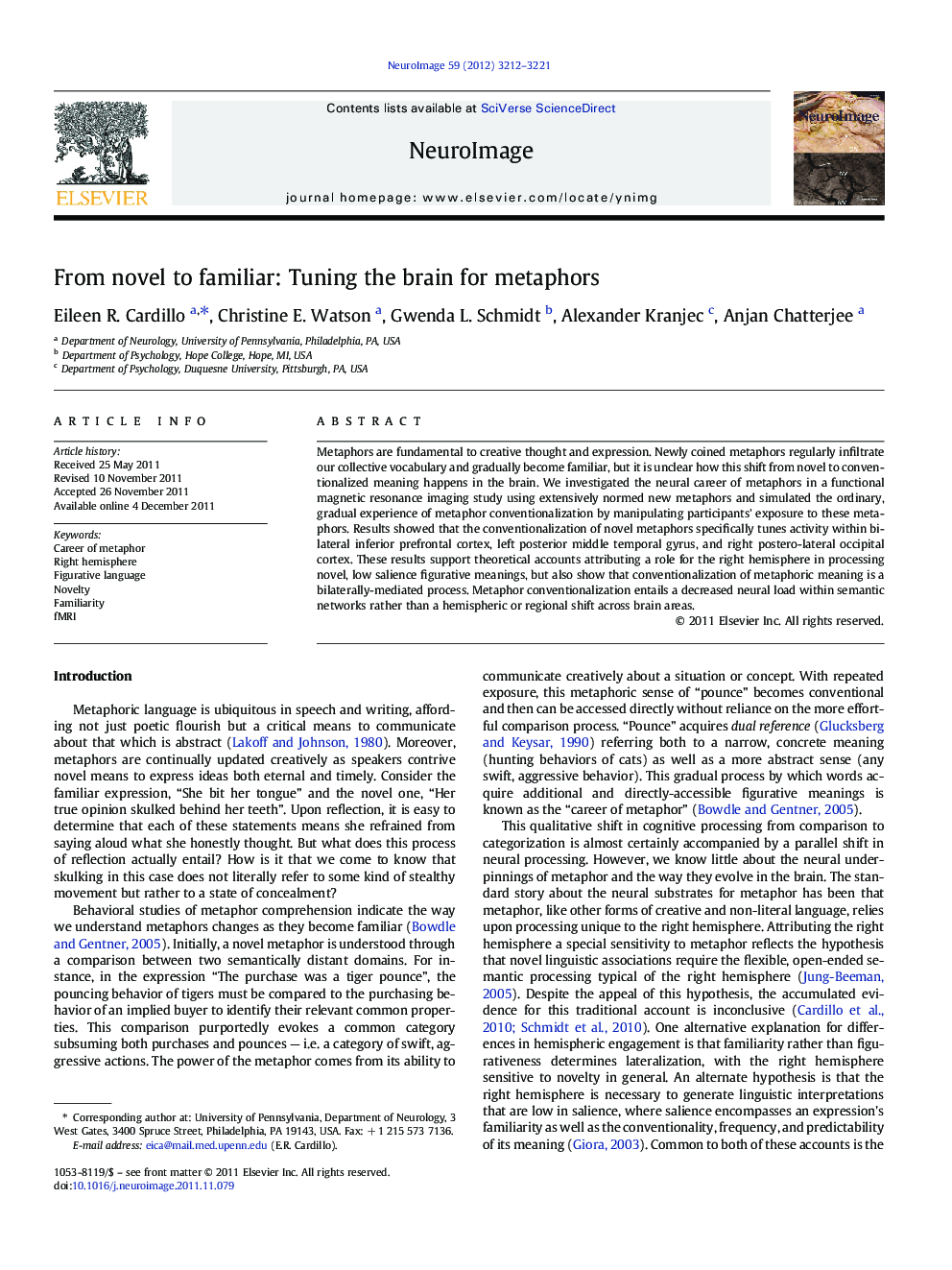| Article ID | Journal | Published Year | Pages | File Type |
|---|---|---|---|---|
| 6032650 | NeuroImage | 2012 | 10 Pages |
Metaphors are fundamental to creative thought and expression. Newly coined metaphors regularly infiltrate our collective vocabulary and gradually become familiar, but it is unclear how this shift from novel to conventionalized meaning happens in the brain. We investigated the neural career of metaphors in a functional magnetic resonance imaging study using extensively normed new metaphors and simulated the ordinary, gradual experience of metaphor conventionalization by manipulating participants' exposure to these metaphors. Results showed that the conventionalization of novel metaphors specifically tunes activity within bilateral inferior prefrontal cortex, left posterior middle temporal gyrus, and right postero-lateral occipital cortex. These results support theoretical accounts attributing a role for the right hemisphere in processing novel, low salience figurative meanings, but also show that conventionalization of metaphoric meaning is a bilaterally-mediated process. Metaphor conventionalization entails a decreased neural load within semantic networks rather than a hemispheric or regional shift across brain areas.
⺠Metaphor is a pervasive linguistic device for creating new meanings. ⺠Over time, these novel senses are conventionalized and understood directly. ⺠We explored the neural correlates of this shift from novel to familiar processing. ⺠Conventionalization decreased neural activation within both hemispheres. ⺠Comprehending novel metaphors is a bilaterally-mediated process.
